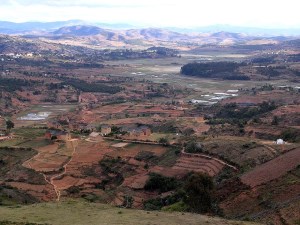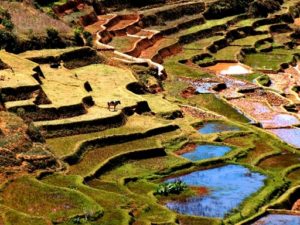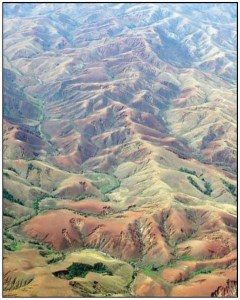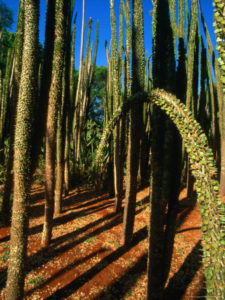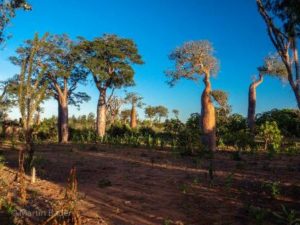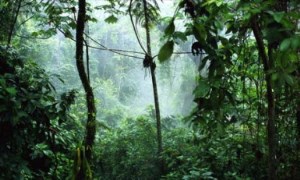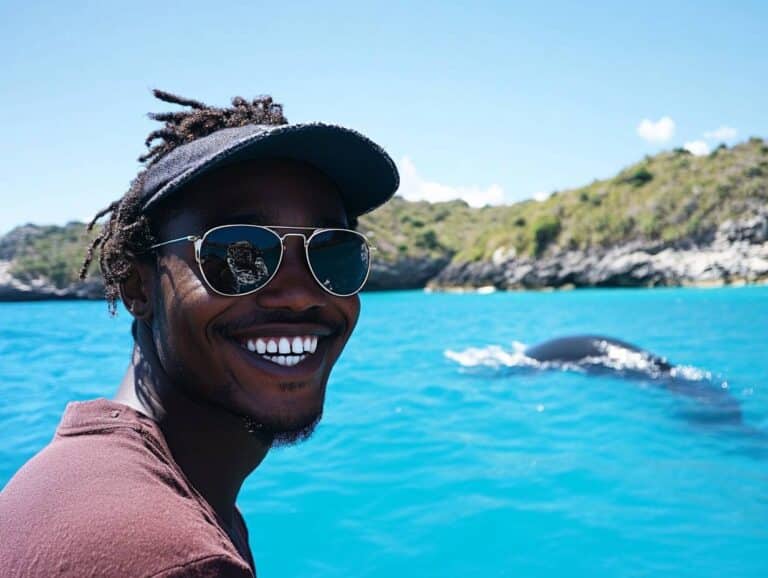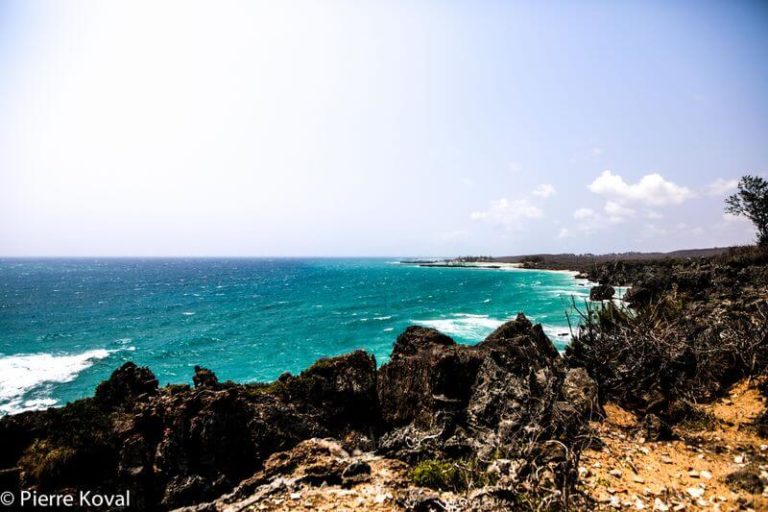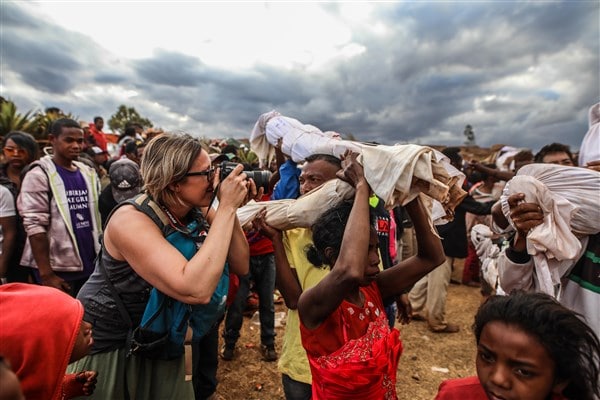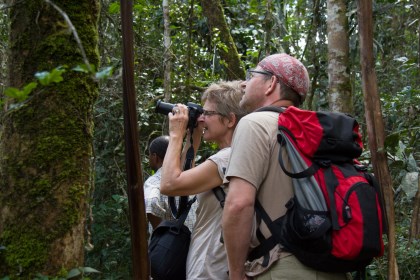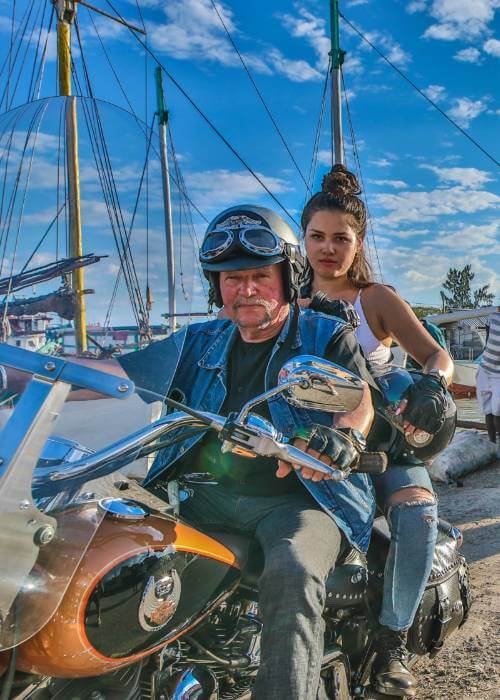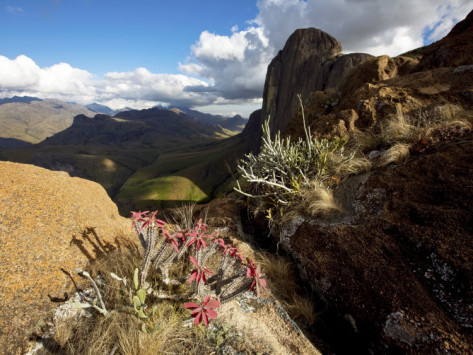The vegetation zones in Madagascar
As an island, Madagascar was until a few centuries ago almost completely covered by breathtaking beautiful rainforests covered. Human intrusion into this delicate natural balance has altered the Madagascar appearance within a very short period of time.
Today, almost 80 percent of Madagascar's surface has become a kind of steppe, while the rainforest is being pushed back further and further. For the sensitive Ecosystem of Madagascar these developments bring with them dire consequences - above all the dying of the rainforest with its unique flora and faunaBut the dwindling of water supplies essential for survival should also be mentioned at this point. When the People in Madagascar If the people of Madagascar do not give a new direction to their present activities soon, it can happen that the extraordinary island will soon be hardly habitable and that the unique variety of living beings, which cannot be found anywhere else in the world, will then completely disappear from the face of the earth. Currently, however, it is not yet so far and Madagascar has besides the steppe still versatile other Vegetation zones or landscape zones to offer. In total, the island is usually divided into five different zones: The central highlands, the north of Madagascar, the south of the island, the west and the east of the spectacular island. Tourists who opt for a Trip to Madagascar interested, will encounter a wide variety of conditions in the different vegetation zones. Therefore, it can sometimes be important to know before the Madagascar vacation in detail about the different landscape zones. This way you can make sure that you really see and experience exactly what you are particularly interested in during your vacation. To enable you to do this, we have provided below an overview of the five vegetation zones of Madagascar which should give you a rough overview. If you wish, you are welcome to take a parallel look at our various Travel offers or ask us directly about the different conditions for our Madagascar travel to inquire.
The Central Highlands
The central highlands of Madagascar basically describes the areas around the Madagascan capital Antananarivo. Mountains, valleys, lakes, smaller and larger hills as well as numerous rivers characterize this scenic zone and provide a varied and diverse vegetation. The fertile soil of this region has led to the fact that in the central highlands much Agriculture is practiced. In terms of the diversity of vegetation zones, this distinctive agriculture has contributed even more to the variety, because the same crops are not grown in all areas of the Central Highlands. Thus, the northern part of the region is primarily dominated by Pastures characterized. Here grows only sparse grass, on which mainly the Madagascan cattle grazing. This soil is not fertile enough for agriculture. The west of Antananarivo is also dominated by grassland, although this is already interspersed with several hills. Further west, the hills then merge into a Mountain rangethe Bongolava Mountains. On the other side, that is, to the east of Antananarivo, lies the so-called Alaotra Trench, which forms a natural border with the Lac Alaotra, the largest Inland waters of Madagascar creates. There you can still find numerous Primary forests as well as many rare animal and plant speciessome of which are already threatened with extinction. The greatest agricultural benefit of the central highlands, we discover south of Antananarivo, where are located numerous rice terraces and seemingly endless fruit and vegetable fields can be discovered. Now and then, some sections of the original rainforest can be discovered in this area, which shows how uncontrolled the clearing of this very rainforest is.
The North of Madagascar
In the north of Madagascar is found a very diverse vegetation zonewhich, on the one hand, produces fertile soils, on the other hand also desert-like areas, beautiful sandy beaches as well as rocky mountains produces.
The fertile soils are used primarily for the cultivation of Rice and sugar cane used. Both goods are produced in Madagascar not only for domestic use, but also make up an important part of the country's economy. Export factor out. In addition, there are numerous important bodies of water, such as the Betsiboka Riverwhich is especially popular with tourists because it can be navigated by boat. In the north, however, there are also large stretches of pristine Primary forest, which in a way is considered the Treasury of flora and fauna of Madagascar can be called. Also interesting is the one located in the north Nosy Be Islandwhich not only delights with ylang-ylang plantations, but also a lush rainforest as well as numerous elongated Dream beaches accommodates. Hardly anywhere on Madagascar is the vegetation accordingly as outstanding and varied as in the north of the island. From a climatic point of view, the north is also extremely interesting: the average temperature is between 25°C and 30°CHowever, the nights can sometimes be sub-zero, and snow can even fall in the mountains. If you are on your Trip to Madagascar If you want to go on a trip to the mountains of the north, you should take appropriate precautions. In this regard, we can gladly help you with more information.
The South of Madagascar
The South of Madagascar belongs to the driest and hottest landscape zones of the island and is above all the area where the fascinating Succulents can be discovered. This unusual plant species manage to store water in their roots, their trunks or in their leaves and thus manage without water for several years. And in southern Madagascar, this is sometimes urgently needed in order to survive. There are regions in this landscape zone where, for several years, there is no a single drop of water falls from the sky. In addition, there are also areas where grassy steppes, as well as wooded mountain slopes become extensive exploration tours invite. In many places in the south of the country, corn is also grown, and it thrives here. The same is true for sisal, a plant valued for its fibers, which can also thrive in dry conditions. The average temperatures in southern Madagascar sometimes take on desert-like proportions, which can be a problem in the Vacation planning should definitely be observed. Feel free to contact us if you need further information on the southern vegetation zone of Madagascar need. By the way: The south of Madagascar is often called the Land of the thorn people designated.
The West of Madagascar
The West of Madagascar is probably the least developed landscape zone on the island, where civilization has made little inroads. Baobab forests shape part of the landscape but also Tobacco and cotton plantations can be discovered especially at the river mouths. The west of Madagascar is often called "wild west" because of the limited respect for law and order in these areas. There are many Slash and burn and overexploitation of nature. Animals are poached and livestock decimated by theft. For tourists, the western areas of Madagascar are in most cases much less interesting, but the vast steppe landscapes with the palm trees and numerous succulents also exert a certain charm. The regions around the rivers are in turn known as fertile farmland The landscape changes the further south you go, as rainfall decreases and the soil and vegetation become more and more sparse. If you are interested in Trip to the West of Madagascar interest, we will help you not only with numerous tips and recommendations further, but can also offer you ready made travel packages offer, in which all Tourist attractions and highlights are already integrated.
The East of Madagascar
For travelers the East Madagascar a real highlight, because this tropical-humid region offers everything that Holidaymakers in Madagascar can only wish for: Mangrove forests, lush rainforest, numerous plantations with vanilla, cloves, lychees and coffee, but also extraordinary flower displays and fascinating animals that live in the partly still untouched rainforests can be discovered. Due to the high precipitation in the east of Madagascar are the Soils here particularly fertile and are used for agriculture. On the other hand, on the east coast there are also always the danger of so-called cycloneswhich then destroy all the laboriously erected buildings within a few moments. The people in this area have been defying these cyclones for centuries, for hardly anywhere is as beautiful on Madagascar as in the east of the island. If you have a Journey through this region plan, you should be aware that the right travel time is of great importance. In order to not necessarily have to experience the heaviest rains as well as the cyclones, you should check with us in advance about the Best possible travel time inform. In addition, you should be aware that the reasonably reliably developed Roads through the east of Madagascar are not always passable due to weather conditions. We are therefore happy to plan a tour on the Canal des Pangalanes for you and accompany you to the most beautiful and extraordinary places that eastern Madagascar has to offer for you. Just contact us and plan a trip with usthat you will never want to forget.

